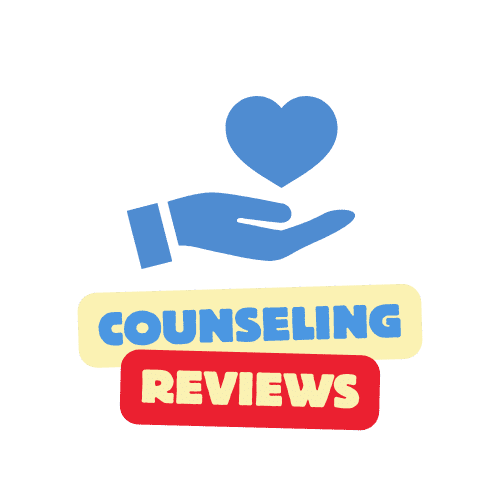Many clinicians find that restricting themselves to a single form of psychotherapy is limiting and not adequate to treat all kinds of mental health issues. Hence, they often specialize in different treatment modalities and pick and choose treatments depending on the individual circumstances of the patient.
Think about it this way. When you invite a plumber home, he may have an entire toolbox with different tools. Depending on the problem that you have, he may choose to use or not use one of the many tools he has in his box. Eclectic therapy works in a similar fashion. The therapist uses one or more tools depending on what you probably need to get better.
Eclectic therapy can be defined as a therapeutic approach combining different evidence-based treatments such as cognitive behavior therapy (CBT), psychodynamic therapy, behavior therapy, mindfulness, dialectical behavior therapy, etc.
In this article, we take a look at what eclectic therapy is, and how it helps you towards the path of healing.
Types of Eclectic Therapy
Eclectic therapy can be brief (lasts only a few sessions), systematic (based on what the client truly needs), prescriptive (a personalized approach), or technical (picking and choosing different techniques while ignoring the theoretical background). Usually, an eclectic therapist combines these techniques and uses the right therapeutic approach based on the context and the patient.
What Can Eclectic Therapy Help With?
Quite paradoxically, most clinicians use an eclectic approach even when they swear by a particular treatment modality. For example, a clinical psychologist who declares that he only uses CBT may often suggest mindfulness to help an anxious patient. Another example is when a behavior therapist attempts to challenge irrational beliefs (rational emotive behavior therapy) in addition to practicing in vivo or in vitro treatments.
It is safe to say that most therapies today inculcate some form of eclecticism even though it is not explicitly stated. However, in some countries, therapies are more structured, and there is no scope for mixing, picking, and choosing among different therapeutic modalities.
Regardless, it is safe to surmise that an eclectic approach helps patients with a wide range of psychological conditions ranging from Axis 1 disorders, such as depression, anxiety, and obsessive-compulsive disorders, to Axis 2 disorders, such as personality disorders.
Eclectic Therapy Examples
One can use an eclectic approach to treat common mental health conditions in many ways. Again, this depends on the individual clinical psychologist and the therapeutic models they are most comfortable with. Here are some examples:
Eclectic Therapy for Anxiety
Research shows that anxiety spectrum disorders are most effectively treated with the help of cognitive behavior therapy. However, some therapists may also use mindfulness, acceptance, and commitment therapies to address specific symptoms. Here is an example:
A person unable to practice relaxation exercises may be urged to practice mindfulness meditation. If the individual cannot write the thought diary, he or she may be encouraged to practice acceptance and commitment therapy for treatment adherence.
Eclectic Therapy For Depression
Like anxiety, depression is best treated with the help of CBT. However, chronic cases of depression or those that have psychotic features may need a different approach. Psychodynamic approaches and even DBT, in addition to medicines, can help in such circumstances.
Eclectic Therapy For PTSD
While CBT is a popular modality for treating PTSD, some people may benefit from eye movement desensitization therapy. This is a trauma-specific therapy that helps people to process their traumatic memories in a safe space. An eclectic therapist deftly combines these and other approaches to reduce the intensity of PTSD flashbacks.
Eclectic Therapy for ADHD
ADHD is a debilitating condition that often requires a multi-disciplinary approach. Eclectic therapy for ADHD often involves CBT, mindfulness meditation, behavior therapy to address undesirable behaviors, etc. Again, it is important to remember that eclectic therapy is diverse, and each therapist may have his or her own way of dealing with things.
Pros & Cons of Eclectic Therapy
| Eclectic Therapy | Regular Therapy |
| It helps address multiple psychological conditions | Each treatment modality is designed to treat specific conditions |
| Gives therapists much freedom in terms of how they formulate cases | Treatment approaches are strict, and it isn’t easy to deviate from set norms |
| There is more freedom for treatment-resistant patients who may wish to try different methods | Clients may find certain therapeutic modalities restrictive |
| Clients are more likely to stay in therapy as there is always scope to try a new method | Clients may drop out quickly if they do not like the therapeutic approach. |
| Eclectic therapy is not regulated, and there is scope for quackery, malpractice, and unprofessional behavior. | Standardized treatments are regulated, and therapists must maintain treatment standards and best practices. |
How to Find a Therapist Who Uses an Eclectic Approach
Finding a therapist who uses an eclectic approach can be easy. Most therapists are usually well-versed with different treatment styles. Clinical psychologists are usually trained in CBT, behavior therapy, dialectical behavior therapy, etc. However, you should confirm with the therapist if they use multiple modalities while treating an individual.
Having an honest conversation regarding the skill sets of your therapist and the treatment approach you are most comfortable with can help, too. However, please remember that your therapist always knows what’s best for you and is able to make professional decisions.
Key Questions to Ask an Eclectic Therapist If You Consider This Type of Therapy
- Are you open to trying different therapeutic modalities if one does not work the way you intend to?
- If I am not comfortable with your approach, can you change it midway?
- During your clinical psychology program, which therapeutic models were taught as part of training?
- What are the treatment modalities you are most comfortable with?
- Are you open to being flexible throughout the therapeutic journey to shift modalities if we don’t see progress?
Please note that your therapists may only answer some of these questions and are not obliged to.
What to Expect at Your First Appointment
Your first appointment with an eclectic therapist will be like any other psychological appointment. The therapists will take a detailed case history and perform psychological assessments. Soon after, the therapist may decide on the therapeutic modalities most likely to benefit you. As this is an eclectic scenario, you may be explained two or more therapeutic modalities that will be implemented during the treatment. You will be given the opportunity to ask questions and clarify doubts, and consent will be sought to proceed.
How Effective is Eclectic Therapy?
Eclectic therapy is only as effective as the therapeutic modalities used. For example, if your therapist uses a combination of CBT, DBT, and BT to address different problems that borderline personality disorder may be causing, it is going to be highly effective. Thus, the effectiveness of eclectic therapy depends on the therapist’s decision and how you respond to the instructions.
Risks of Eclectic Therapy
Although there are no risks to eclectic therapy per se, it is essential to choose a trained clinical psychologist or a registered mental health worker. These licenses and registrations differ from state to state and country to country. Check with your local authorities to find out who can provide mental health care, and contact the nearest therapists to enquire if they offer eclectic therapy.
You may even be able to access eclectic therapy online. Just make sure to ask the same questions we have listed above so that you know what you are getting into. Therapy is a two-way street in which the therapist’s expertise and the patient’s cooperation are equally crucial for positive therapeutic outcomes.





